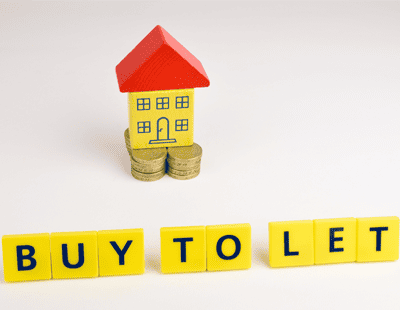If you’re considering or already own a buy-to-let property, this guide provides an overview of the criteria involved in securing a buy-to-let mortgage.
What criteria are assessed with a buy-to-let mortgage?
- Age: Some lenders have a minimum age requirement, typically ranging from 21 to 25 years old.
- Income: Certain lenders may require a minimum income, such as £20,000 to £25,000 per year. However, some lenders do not have specific income requirements.
- Deposit level: Typically, a 25% deposit is required for a buy-to-let mortgage. However, depending on rental calculations, some lenders may require a higher deposit.
- Residential status: Some lenders prefer borrowers to own the property they live in, while others have no such requirement.
- Affordability Rental calculations: Lenders conduct stress tests based on rental income to ensure affordability. They assess whether the rental income is sufficient to cover the mortgage payments as determined by the lender.
What are the affordability stress tests based on?
Buy-to-let lenders conduct affordability assessments for buy-to-let mortgages, which vary based on several factors. Here are some additional considerations:
- Client’s income: Higher-rate taxpayers often face more stringent stress tests compared to lower-rate taxpayers. Lenders assess the client’s income to determine their ability to cover mortgage payments.
- Fixed rates: Buy-to-let mortgages with a 5-year fixed rate or longer may have more lenient stress tests compared to mortgages with shorter fixed rates. This is because longer fixed-rate periods provide more stability and predictability for the borrower
- Lender criteria: Lenders’ stress tests can vary for buy-to-let mortgages. The specific criteria and requirements for stress testing may differ from one lender to another.
- Top slicing: Some lenders offer a hybrid model where surplus income, in addition to rental income, is considered. This means that even if the rental income falls short of the lender’s requirements, the borrower’s other income sources can be used to “top up” the affordability assessment.
What are the buy-to-let calculations?
Buy-to-let lenders use calculations that involve taking the mortgage balance, applying a notional interest rate higher than the mortgage rate, and multiplying it by a certain percentage. For example, let’s consider a £100,000 mortgage with a 3% interest rate. The lender may conduct a stress test using a higher rate, such as 5%, and multiply it by 145%. Finally, they divide the result by 12 to obtain the monthly payment.
£100,000 with an interest rate of 3% and a lender’s stress test rate of 5%. They apply a percentage of 145% to the notional interest rate and divide it by 12 to determine the monthly required rent.
- Mortgage balance: £100,000
- Notional interest rate (stress test rate): 5%
- Percentage multiplier: 145%
Calculation
Monthly required rent = (Mortgage balance * Notional interest rate * Percentage multiplier) / 12
Monthly required rent = (£100,000 * 5% * 145%) / 12
Monthly required rent = (£100,000 * 0.05 * 1.45) / 12
Monthly required rent = £604.17
In this example, the lender would require a minimum monthly rent of approximately £604.17 to meet their affordability criteria based on the stress tests. Keep in mind that actual lender calculations and requirements may vary, so it’s essential to consult with specific lenders for accurate information.
Speak To an Expert
Whether you’ve just had an offer accepted on a property and you’re ready to go, or you’re simply wondering how much you need to save for a deposit, it’s never too soon to reach out.
What is the deposit criteria?
In most cases, buy-to-let mortgages do require a minimum deposit of 25% of the property’s purchase price. However, it’s important to note that lenders also apply stress tests to assess the borrower’s ability to meet mortgage payments.
These stress tests are typically based on the remaining balance of the mortgage, taking into account factors such as the interest rate and rental income.
In situations where the rental income is relatively low compared to the mortgage amount, the stress tests may indicate that a larger deposit is required to ensure affordability.
What is the residential status criteria?
Many buy-to-let lenders have a policy of only considering applications from homeowner occupiers. This is done to avoid “back door buy-to-lets,” where borrowers purchase a property with the intention of living in it themselves.
By requiring borrowers to already own their own property, lenders mitigate the risk of borrowers misrepresenting their intentions and using the buy-to-let mortgage for personal occupancy.
Many lenders are hesitant to provide buy-to-let mortgages to first-time buyers, although some lenders may still offer such mortgages to this group. The specific lending policies and criteria vary among lenders, and some may be more open to providing buy-to-let mortgages to first-time buyers than others.
Do you need a minimum income for a buy-to-let mortgage?
The minimum income requirement for a buy-to-let mortgage can vary among lenders. Some lenders may have a minimum income requirement of £25,000, while others may have no specific income requirement. There are also lenders who set the minimum income requirement at £20,000.
Which buy-to-let lenders do not require an income?
Some buy-to-let lenders that do not require income for buy-to-let mortgages include TMW (The Mortgage Works), Coventry Building Society, Bank of Ireland, and Post Office. These lenders may have specific criteria and eligibility requirements for borrowers, but they do not have a minimum income requirement for buy-to-let mortgages.
On the other hand, BM Solutions, which is part of Lloyds Banking Group, typically requires a minimum income for buy-to-let mortgages, although the income requirement may be relatively low compared to other lenders.
Is it possible to get a buy-to-let mortgage on a run-down property?
Most buy-to-let mortgages are only available for properties that are deemed “lettable” in their current state. Lenders typically require properties to meet certain standards and regulations to ensure they are suitable for rental purposes. This ensures that the property is in a condition that can attract tenants and generate rental income. Lenders may have specific requirements regarding the property’s safety, habitability, and overall condition before granting a buy-to-let mortgage.
Which buy-to-let lenders lend to first-time buyers?
Many lenders have restrictions on providing buy-to-let mortgages to first-time buyers, there are some lenders who do cater to this group. NatWest and Barclays are examples of mainstream lenders that may consider offering buy-to-let mortgages to first-time buyers.
Which but to let lenders lend to non-owner occupiers?
Many buy-to-let lenders are willing to provide mortgages to non-owner occupiers, allowing individuals to specifically invest in rental properties. Examples of buy-to-let lenders that cater to non-owner occupiers include TMW (The Mortgage Works), BM Solutions, Coventry Building Society, NatWest, and Barclays.
What is the minimum EPC rating for a buy-to-let mortgage?
For buy-to-let mortgages, most lenders require a minimum Energy Performance Certificate (EPC) rating of E. This means that the property must have an EPC rating of E or higher to meet the lender’s criteria for granting a buy-to-let mortgage. The EPC rating indicates the energy efficiency of the property, with higher ratings indicating better energy performance. It’s important for landlords to ensure their properties meet the minimum EPC rating requirement to be eligible for buy-to-let financing from most lenders.
For more tips and advice about buy-to-let mortgages, read our helpful blog or please contact a member of the Strive team, by emailing info@strivemortgages.co.uk or call us on 01273 002697.
Frequently asked questions on buy-to-let mortgages…
The worthiness of buy-to-let investments depends on factors such as individual circumstances, market conditions, and financial goals. Consider rental yields, potential capital appreciation, market trends, expenses, responsibilities, and risks. Seek professional advice to evaluate the viability of buy-to-let investments based on your specific situation.
To qualify for a buy-to-let mortgage, applicants generally need to meet the following criteria: be at least 18 years old, demonstrate good creditworthiness, provide a minimum deposit of 25% of the property’s purchase price, and preferably have a reliable income. Lenders assess these factors to determine the borrower’s eligibility and ability to manage the financial responsibilities associated with a buy-to-let investment.
Obtaining a buy-to-let mortgage with bad credit can be challenging. While it may be possible with specialist lenders or by paying higher interest rates, most mainstream lenders prefer borrowers with good credit histories.




